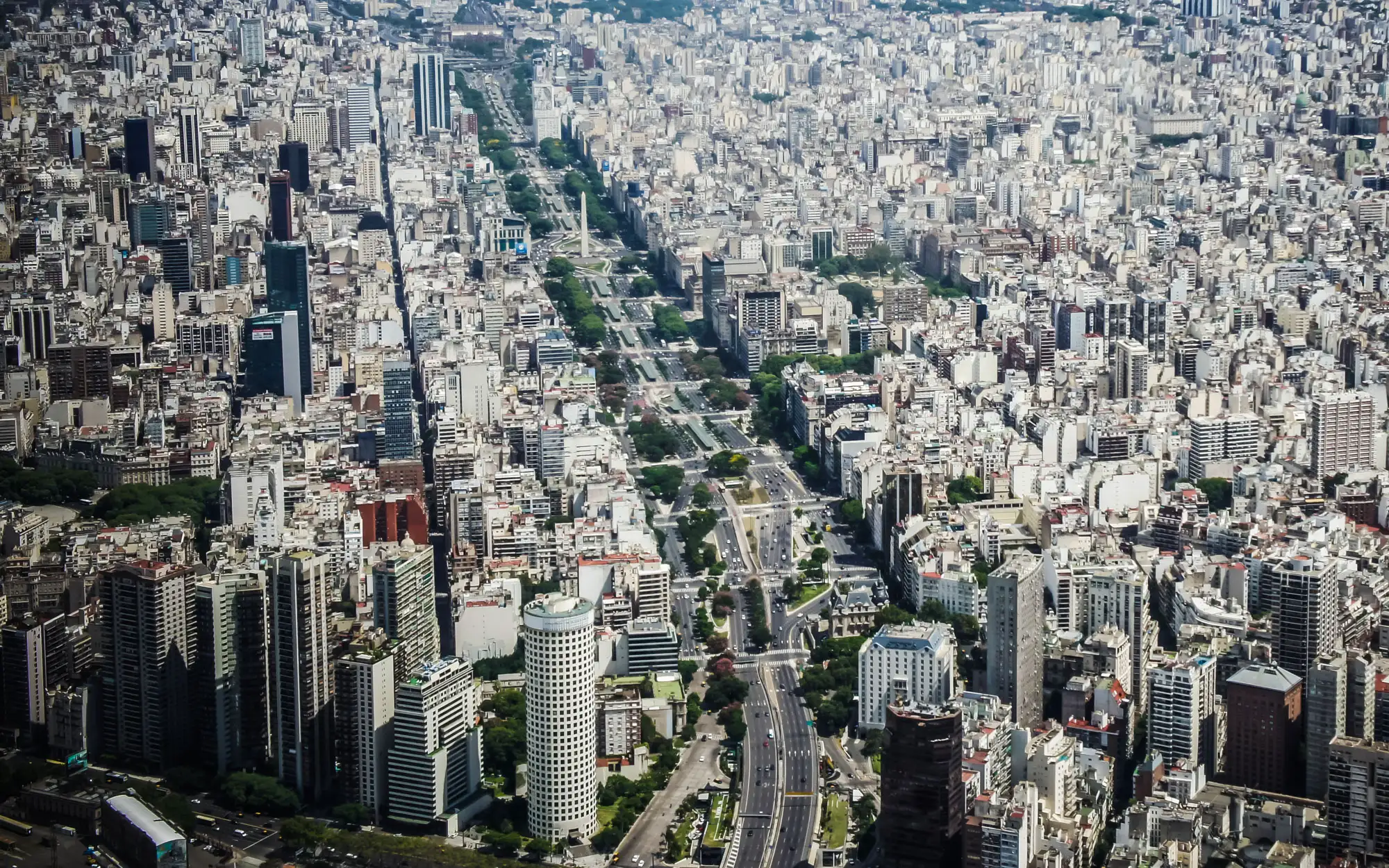
Buenos Aires' 9 de Julio Avenue, a grand boulevard of vibrant urban life
9 de Julio Avenue, located in the heart of Buenos Aires, Argentina, is one of the world's widest avenues and a symbol of the city's grandeur and complexity. Named after Argentina's Independence Day (July 9, 1816), this thoroughfare is much more than a transportation route; it's a vibrant stage showcasing Buenos Aires' cultural, architectural, and urban life.
The avenue's most iconic landmark is the Obelisco de Buenos Aires, a towering monument commemorating the 400th anniversary of the city's founding. Around this emblematic structure, 9 de Julio Avenue showcases an eclectic mix of architectural styles, from the French and Italian-influenced buildings of the early 20th century to modern high-rises. Each block along the avenue tells a different story of the city's architectural evolution.
9 de Julio Avenue is a hub of cultural activity. The avenue is lined with theaters, including the famous Teatro Colón, one of the world's leading opera houses known for its exceptional acoustics and architectural beauty. Street performers, tango dancers, and musicians regularly adorn its sidewalks, adding to the avenue’s lively atmosphere.
The avenue is a microcosm of Buenos Aires' urban life. Along its length, you'll find a variety of shops, cafes, and restaurants that capture the city's renowned gastronomy and café culture. The area is a bustling mix of tourists and locals, making it a great place to observe the daily life and energy of the city.
Despite its urban density, 9 de Julio Avenue is interspersed with green spaces and adorned with numerous sculptures and public art installations. These artistic and natural elements provide a respite from the hustle and bustle of city life and reflect Buenos Aires' commitment to public art and urban beautification.
Strolling down 9 de Julio Avenue in Buenos Aires is like walking through a dynamic canvas of Argentinian culture, where the rhythm of city life is set against the backdrop of monumental architecture and sprawling urban landscapes.

The wide avenue runs through the entire center of Buenos Aires, from Avenida San Juan to Retiro.
The avenue is a marvel of urban planning and transportation. Its width accommodates numerous car lanes, pedestrian walkways, and a central metro line. This design not only serves practical transportation needs but also creates a sense of openness and grandeur unique to Buenos Aires.
9 de Julio Avenue often serves as the focal point for major celebrations, parades, and public demonstrations. Its expansive size makes it an ideal location for cultural events and political gatherings, showcasing the avenue’s role as a space where the city’s social and political life unfolds.
As night falls, the avenue transforms. The lights of theaters and restaurants illuminate the street, and the energy shifts to a more vibrant nightlife. Bars and nightclubs in the vicinity offer a taste of Buenos Aires' renowned nightlife, famous for its late hours and lively spirit.
Visiting 9 de Julio Avenue is essential for any trip to Buenos Aires. To fully experience the avenue, it's recommended to take a leisurely walk along its length, allowing time to admire the architecture, enjoy a coffee in one of its many cafes, and immerse yourself in the avenue’s bustling atmosphere. The area is well-connected by public transport, making it easily accessible from other parts of the city.
9 de Julio Avenue is more than just a road; it's a living, breathing entity that captures the essence of Buenos Aires. It's a place where history, culture, and modern urban life intersect, offering a unique and vibrant experience. Whether you're exploring its architectural wonders, enjoying its cultural offerings, or simply soaking in the atmosphere, 9 de Julio Avenue is a testament to the vibrancy and diversity of life in Buenos Aires.
Welcome to Argentina!
Share this Sight with: